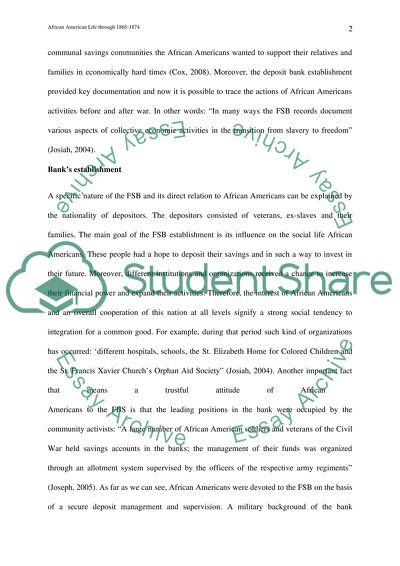Cite this document
(“African american life through 1865-1920 Essay Example | Topics and Well Written Essays - 1250 words”, n.d.)
Retrieved from https://studentshare.org/history/1426156-african-american-life-through-1865-1920
Retrieved from https://studentshare.org/history/1426156-african-american-life-through-1865-1920
(African American Life through 1865-1920 Essay Example | Topics and Well Written Essays - 1250 Words)
https://studentshare.org/history/1426156-african-american-life-through-1865-1920.
https://studentshare.org/history/1426156-african-american-life-through-1865-1920.
“African American Life through 1865-1920 Essay Example | Topics and Well Written Essays - 1250 Words”, n.d. https://studentshare.org/history/1426156-african-american-life-through-1865-1920.


